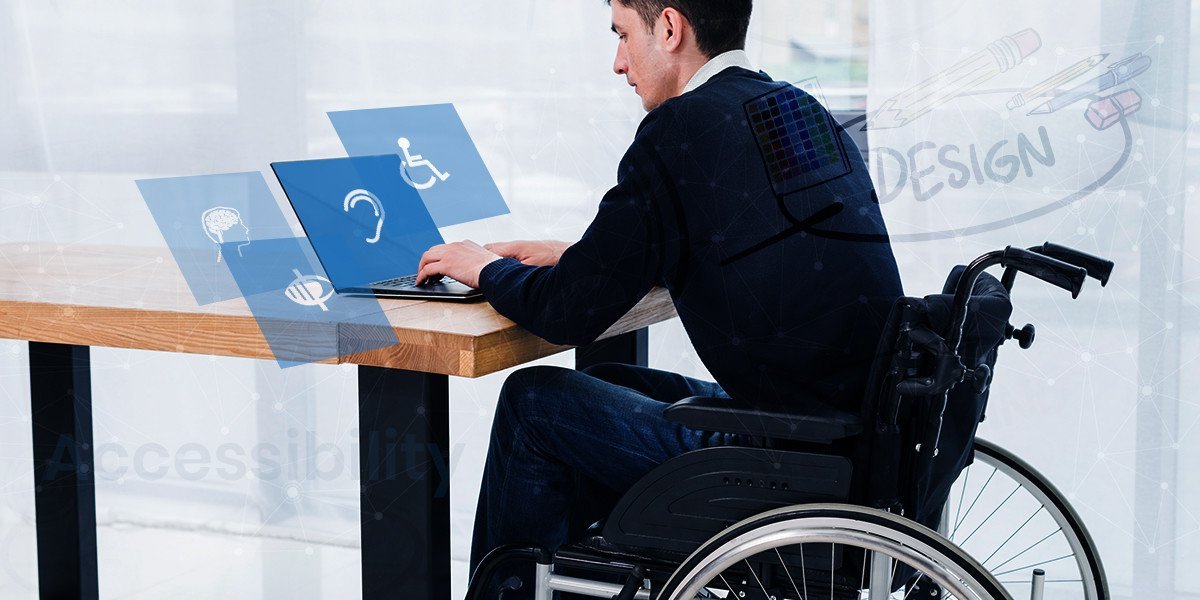
When you say inclusive design, it considers the needs and abilities of all people. It is more about just accessibility, which mainly focuses on people with disabilities and how to make websites or apps available for them.
The inclusive design proposes that apart from permanent disabilities, there are situational, temporary, or changing disabilities that affect everyone. We use mobile devices in loud surroundings, sometimes struggle with screen glare in daylight, and also attempt to hit links on touch screens that are positioned too adjacent to each other. All of these situations, no matter how simple it sounds, leave us temporarily impaired.
Umesh Pandya, the co-founder of Wayfindr, said in one of his talks that Inclusive design helps to bake in scale and reach into your products and services from the outset, making your solution useful to many more people, including the disabled community.
He continued explaining that if you use strategic management tools and processes along with inclusive design, it can deliver products and services that have shared value. The fundamental premise behind formulating shared value is that the competitiveness of a business and the health of the communities around it are reciprocally dependent. It becomes good business to do good.
Here’s what is recommended.
Get to Understand the Folks you Design for
The founder and principal designer at Canadian UX and content strategy and web technology consultancy The Republic of Quality, Steve Fisher, explained that inclusive design is more profound than just functional purposes and assuming you get it right. It is crucial to understand the groups and the people that you are designing for. He said. Design isn’t just a minute; it’s the ideas people take in and the actions that are taken out daily. From a neutral perspective, web design is intended to make the entire concept better.
Remember that Every Single Consumer Benefits
In today’s mobile-first world, Every individual shopper benefits from accessibility daily. It is the key to recognizing the significance of inclusive design, suggests the experts. Isn’t it a common situation when we struggle to see the text on a desktop computer? The option is to get a bigger monitor or reduce the screen resolution. Also, you can choose your preferred hardware. But when you have to look at a small screen, that too on a sunny day, make things difficult.
And that translates to temporary vision, hearing, motor, and cognitive impairment. Simply put, without accessibility at the very heart of everything, the websites and apps will leave disabled shoppers. And, in a further discourse, it will leave almost each of your customers frustrated and not to spend money on your products/services.
Identify Your Premises in Web Design
Experts argue that all web developers And designers make assumptions in their work. But, it is reasonable to have presumptions; what we fail to recognize at times is how such theories might impact others. For instance, what you appreciate as funny or quirky might seem opposite to another user.
Maybe a seemingly simple joke triggers a bad memory or is at the wrong time. Perhaps someone is trying to finish a task from their tablet at the airport on ten percent battery life and lousy wifi? Does your well-thought design experience still work? Questioning assumptions suggests perceiving what you think is right about all other users. For instance, if you are making a quirky statement through your web design, some might take it on their funny bones, while others can think it as offensive. No web developer or designer can be perfect every time. But it is essential to recognize your assumptions – whether they are more accessible and more inclusive than others.
Don’t Allow the Data to Take Over
Data represents a significant role in the design. It helps businesses recognize their users and can be used to improve the UX of a product. It’s essential, however, to understand the balance and not place much emphasis on data.
Data should not include a be-all-end-all concept, say the senior UI/UX designers. When making decisions based on data, recognize that it is only as good as those raising it and asking questions about it. Diversity is imperative as it helps to bring the viewpoints to keep data accountable and ask the right questions about data.
Design for Unique Uses First
To create a genuinely inclusive interface, designers should be as good at creating interfaces for people with disabilities as creating interfaces for themselves. One can find tons of beautiful patterns that serve regular users with a mouse, a screen or a touch device. In these patterns, the non-visual, non-mouse, non-touch part of the interface is not done except for a reconsideration. It’s depressing to see users with assistive technology grappling to use some of these ubiquitous interfaces.
Experts suggest to designing uncommon first. This means developing a beautiful interface that works comfortably with a keyboard first and then adding more basic interactions as an afterthought. Designers and developers can start with a hierarchy where they make the design for a screen reader first and then for the rest. Maybe this can be a complete approach to create a truly inclusive design.”
Be considerate while choosing a colour. Colour is a powerful way to enhance the information potential of any design. However, for communication to reach everyone, a little bit of care is required. A range of factors is involved for a user to receive information communicated via colour. There can be a completely different perception of data due to colour blindness.
Two Techniques to Ensure that Colour Works for Most People Almost Every Time Includes
Use good contrast: Maintaining the Ratio of 4:1 is a good starting point; however, there’s no upper limit. Good difference forms the foundation of good colour design. Avoid relying on colour to convey meaning. Add design elements that enhance the flow of interactions, such as adding textures or underlining links or making colourful charts and graphics.
Design with Transparent Affordances
Affordances are pointers of what Can be done within a web page. For instance, a search box shows the user that the site has a search option, and a raised button design indicates that something is clickable. Every designer would like to make something that the broadest range of users can use. So, make sure that all the interactive elements must be interactive. Using very flat designs with buttons and features may look good, but if users don’t know what they are doing, they lose their usefulness.
Designing with clear affordances makes things easy for everyone, more so when cognitively impaired users work it, distracted users, or even the ones in a hurry.
Inclusive Design is Great for Any Business
When it comes to optimizing your possible audience, it is essential to have an inclusive model. It makes business sense as the more people you reach, the more significant the potential profit. It’s that easy. Follow Anonyoo for more tips, and reach out to the experts if you are looking for inclusive design for your website.
